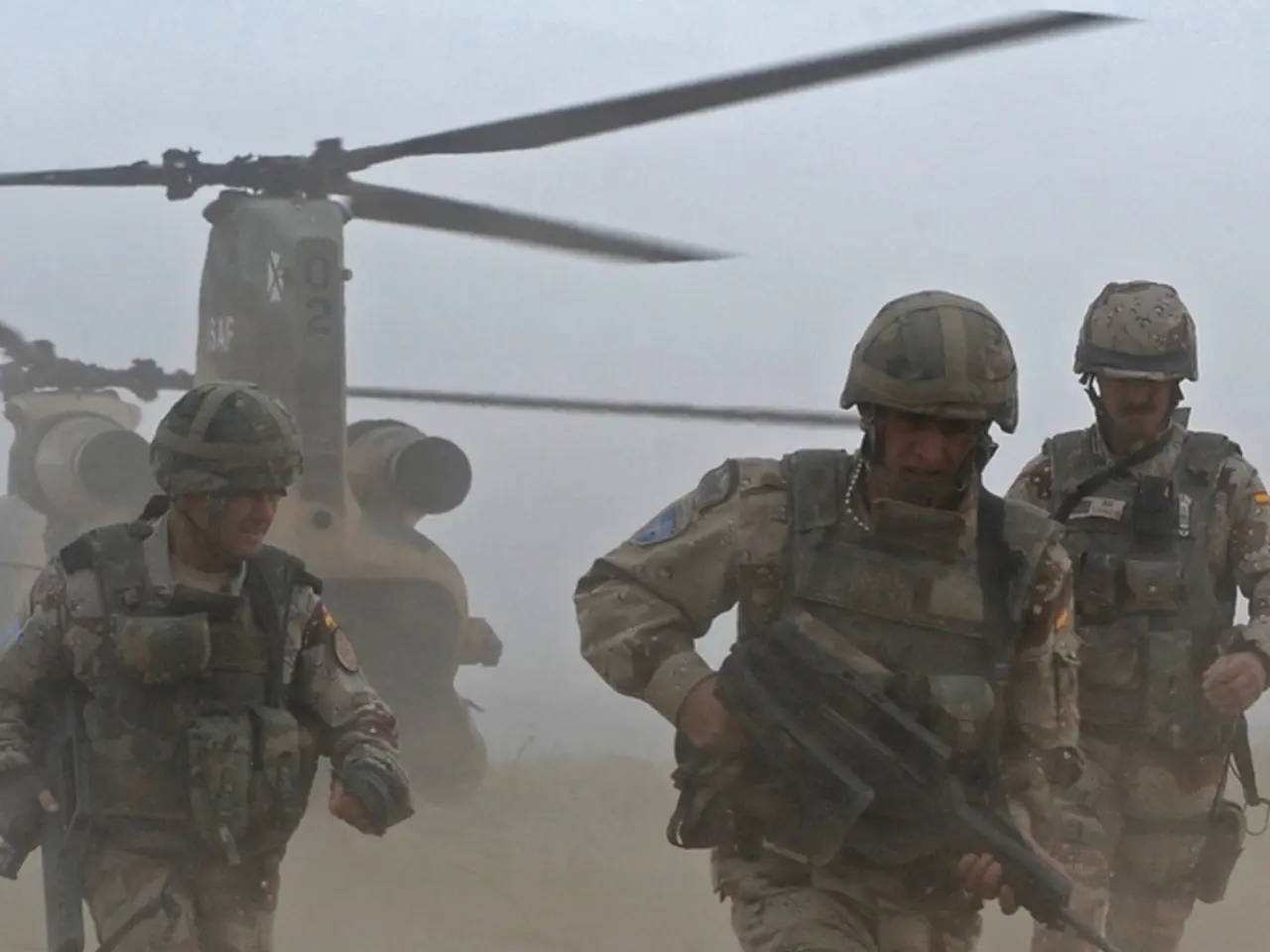Countering Drone Threats: The Essential Infrastructure for Defense
In the realm of counter-unmanned aerial systems (C-UAS), the integration of sensor fusion and network architecture plays a crucial role in enhancing the detection, tracking, and engagement of hostile drones. This integration efficiently manages data from multiple sources, enabling effective command and control (C2) across distributed forces.
Sensor Fusion
At the heart of this integration is sensor fusion, a process that merges data from various disparate sensors, such as radar, cameras, and radio-frequency detectors, into a single coherent air track. This consolidation helps avoid multiple redundant detections of the same drone, ensuring a clear, unified operational picture.
Temporal alignment, which synchronises sensors to a shared clock, and spatial alignment, translating sensor data to a common reference frame using GPS or inertial measurements, are key components of sensor fusion. Deconfliction algorithms are also employed to handle varying sensor reporting latencies and qualities. These techniques decrease cognitive load on operators, improve situational awareness, and enable more reliable target identification and tracking.
Network Architecture
Network architecture supports the transmission and integration of sensor data and C2 commands within bandwidth constraints and latency requirements. It balances sensor fidelity against network capacity, ensuring that high volumes of data do not overwhelm communications, particularly at the tactical edge where bandwidth is limited and latency matters for timely engagements with high-end effectors like interceptors or jamming systems.
A robust and scalable C2 network architecture also enables distributed and mobile C-UAS operations, allowing forces to detect and engage drones even when sensors and effectors are not co-located.
The Synergy of Sensor Fusion and Network Architecture
This synergy between sensor fusion and network architecture improves C-UAS performance by reducing false alarms and improving track accuracy, enabling real-time data sharing and command decisions across echelons, optimising resource allocation, and facilitating deployment in complex environments.
In a recent C-UAS exercise, 70% of a US Army platoon's bandwidth was consumed by sensor data alone. By optimising resource allocation, these technologies can ensure that high volumes of data do not overwhelm communications, particularly at the tactical edge.
Challenges and Solutions
Maintaining a common identity, especially in a federated network where each echelon fuses its own sensor data locally, is a significant challenge. To overcome this, the department must define and own the APIs (application programming interfaces) that allow different systems to interact, connecting all sensors, effectors, and C2.
Establishing robust transport to connect diverse sensors and effectors into a unified network is another foundational challenge. Solving this requires robust protocols for track number assignment, deconfliction, and reconciliation across the enterprise.
In conclusion, sensor fusion consolidates diverse sensor inputs into actionable intelligence, while network architecture delivers that intelligence efficiently and flexibly to operators and effectors, significantly enhancing C-UAS capability to detect, track, and defeat drone threats in real time.
- The crucial role of sensor fusion in C-UAS integration is evident in its ability to consolidate data from various sensors, such as radar, cameras, and radio-frequency detectors, into a single coherent air track, ensuring a clear, unified operational picture.
- Network architecture is vital for the efficient transmission and integration of sensor data and C2 commands within bandwidth constraints and latency requirements, thus balancing sensor fidelity against network capacity.
- The synergy of sensor fusion and network architecture improves C-UAS performance by reducing false alarms, improving track accuracy, enabling real-time data sharing, optimizing resource allocation, and facilitating deployment in complex environments.
- In the realm of cybersecurity, maintaining a common identity and establishing robust transport to connect diverse sensors and effectors into a unified network are significant challenges that must be addressed through robust APIs and protocols for track number assignment, deconfliction, and reconciliation.
- Advancements in science, space-and-astronomy, data-and-cloud-computing, and technology play a pivotal role in the development of C-UAS, enabling sophisticated sensor fusion, network architecture, and AI/ML algorithms to enhance the defense strategy against drone threats.




